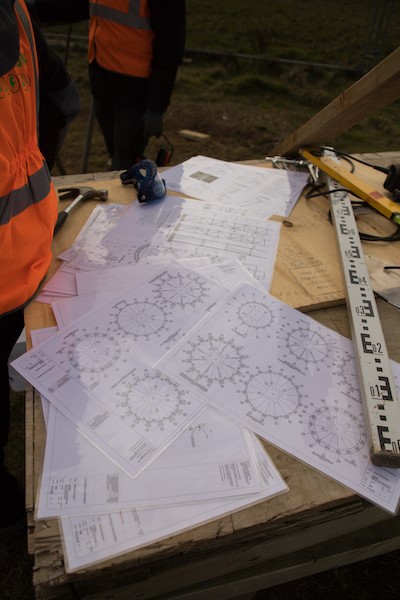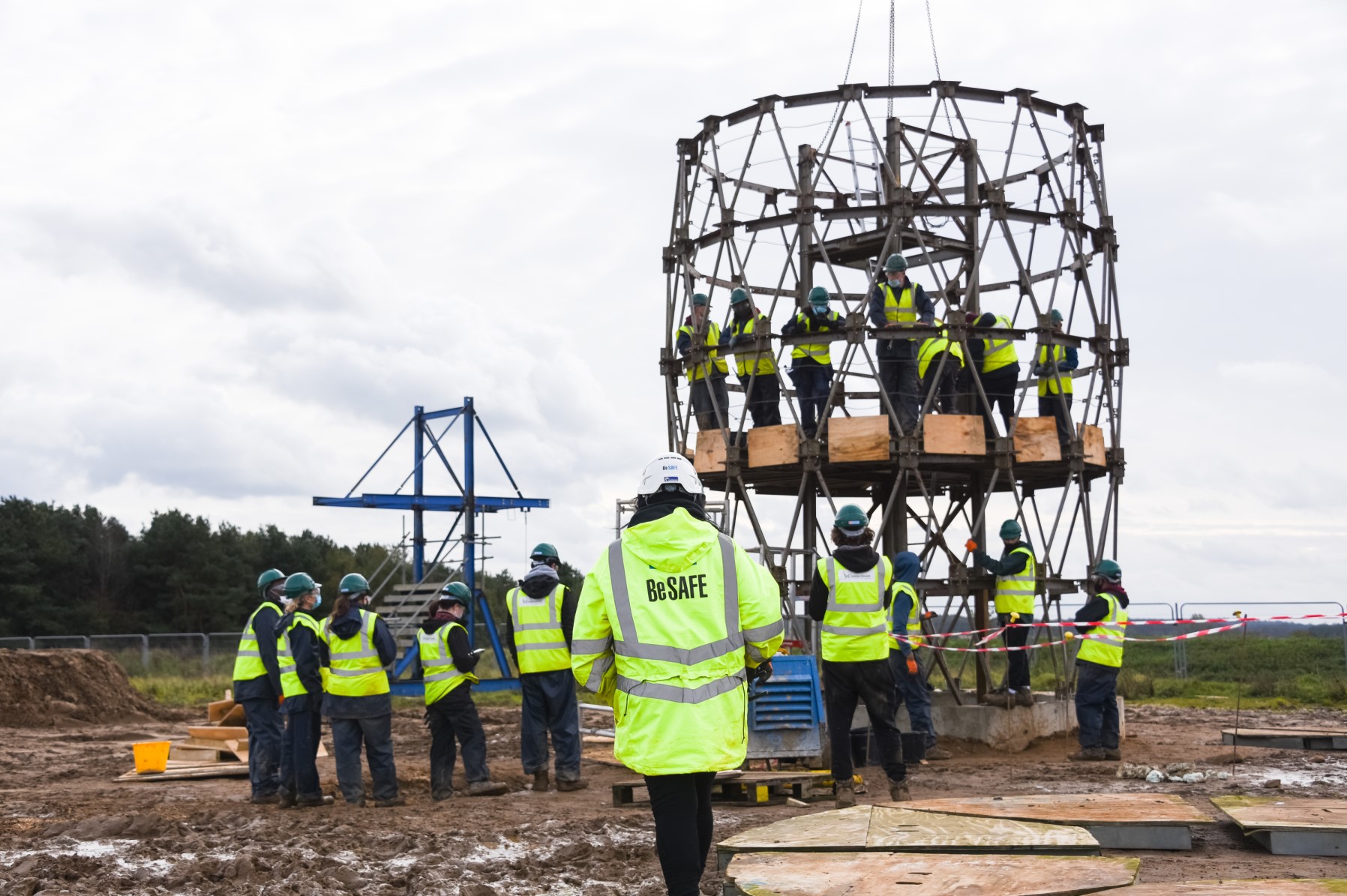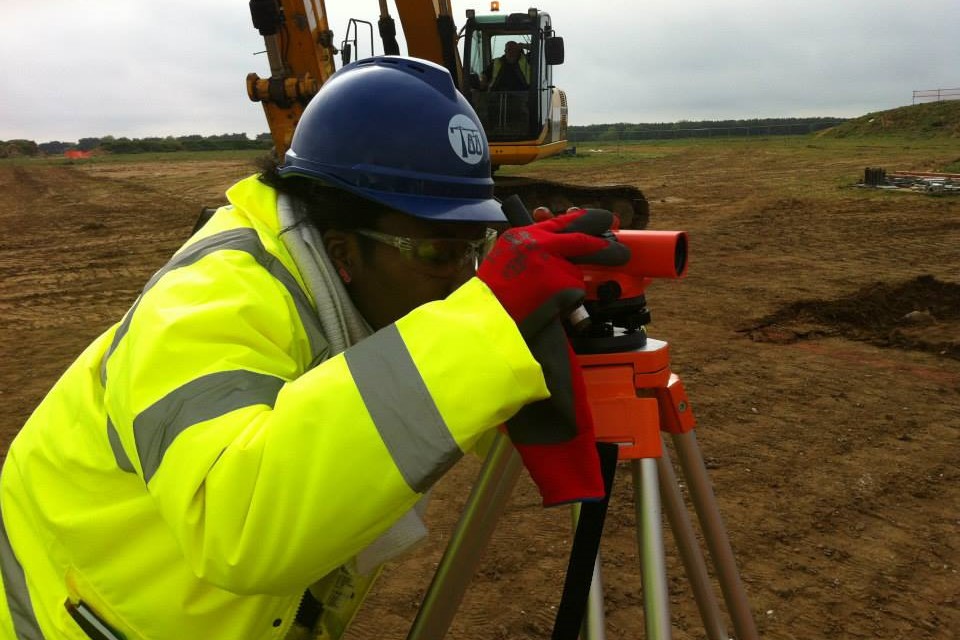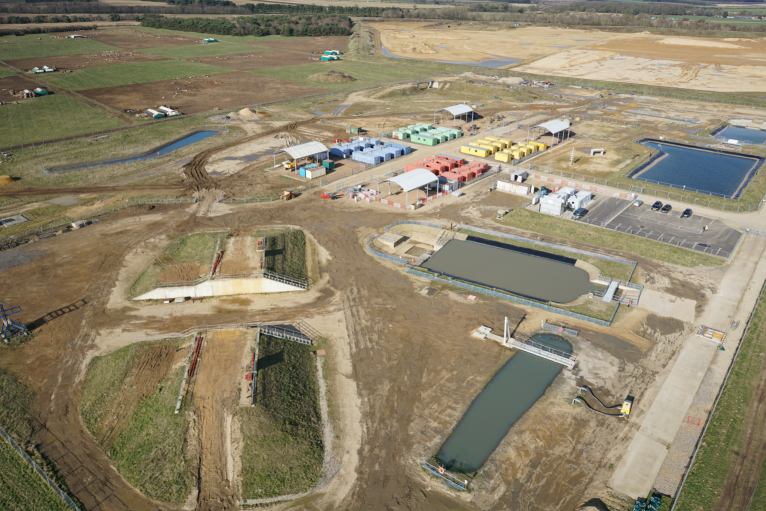
Students from the University of Westminster pouring concrete at Constructionarium
An ongoing skills shortage and ageing workforce continue to put pressure on employers in the construction industry. Companies are competing for the most highly sought graduates to move their businesses forward: those who are work-ready, with strong technical abilities and excellent interpersonal skills.
While knowledge can be shared through traditional academic courses and practices, such abilities and skills are best acquired from practical, on-the-job experience. Constructionarium Ltd, a not-for-profit organisation launched in 2003, aims to transform the way practical skills are taught to undergraduates and professionals, providing innovative, hands-on experience.
Originally designed by industry and academics from Imperial College London with undergraduates in mind, a Constructionarium project is more like a field trip than an apprenticeship. Typically, a university will bring a cohort of students – a minimum of 15 and a maximum of 95 – to stay at Constructionarium in Bircham Newton, Norfolk for a week to work on projects.
Constructionarium is also used in other ways – further education students gain experience from the projects and firms use it as part of their induction process or as a test-run or team building exercise prior to a project. With this multitude of uses in mind, all Constructionarium projects are flexible and can be tailored to meet the age and skill level of all delegates.


Pocket projects
More than 13,000 individuals – some of whom have gone on to be chartered by RICS – have to date completed a Constructionarium project. Each project is a scaled-down replica of an iconic structure from around the world, such as the Gherkin in the City of London or the Milau Viaduct in southern France, and the work reflects the challenges of life on an actual site, enabling students to apply the knowledge they have gained in a practical, safe environment.


In addition to developing their own project plan and team structure, Constructionarium students must prepare method statements. They are responsible for health and safety, logistics, quality assurance and cost control, reporting progress to the client – the industry partner supporting the project or, in the absence of one, the Constructionarium site team – at the end of each day.
As students are out of their comfort zone, the power dynamic of the classroom is altered and they step up into leadership roles. They must solve problems, make decisions and deal with unexpected situations and weather conditions as they arise, all with the added pressure of a deadline. Students learn that collaboration and effective communication are the key to success.


Case study: Dominic Bailey
Dominic Bailey was studying for a BSc in quantity surveying and commercial management at the University of Westminster when he attended Constructionarium in 2013, his first experience of being on site. He says: “This was the first time I understood the full picture. I’d read about the theory of concrete, but being responsible for my own concrete pour really brought it to life.”
Dominic’s team were working on the Kingsgate Bridge project, a replica of the concrete footbridge across the River Wear in Durham; this was the last structure to be designed personally by Ove Arup, in 1963, and is now grade I listed.
The Constructionarium version was 10% of the original’s size, with a span of 10m, and 2 halves that were built parallel to the river before being pivoted to form the crossing. Students had to identify the correct setting out, cast the pier foundations, and ensure the turntable bearings were correctly placed. The project was supported by concrete-frame contractors Byrne Brothers.
Dominic found the experience he gained was beneficial when job hunting: “It was a great selling point – I stood out from the competition because I could demonstrate how I applied my knowledge in a practical context.”
He joined Balfour Beatty as a graduate and became an RICS member of in 2019. He is now a senior quantity surveyor at construction and engineering company VolkerFitzpatrick, working on the Barking Riverside extension.
His role involves supporting junior team members, and he encourages them to get as much site experience as possible: “As a quantity surveyor you need to be able to challenge the design team constructively, and the more time you spend on site the more you hear the technical jargon and understand that level of detail that you just don’t get from reading.”
Industry support
Industry partners play a significant role at Constructionarium, with a contractor and a consultant providing resources, knowledge and mentoring. Students have access to experienced professionals to help develop their commercial awareness, while firms are, in turn, able to develop their own staff, including their graduates and apprentices, spot emerging talent and invest in the next generation of professionals. As an example, junior managers can mentor the students on site in advance of moving into a higher leadership role.
COVID-19 restrictions have forced many to work or study from home this year, denying them opportunities for practical education. Constructionarium reopened in October after making its site in COVID-secure, hosting students from the University of Southampton. In the new year, students from the Universities of Central Lancashire, Leeds and Salford and UCL, as well as the latest intake of graduate trainees from contractor Multiplex, will gain experience at Constructionarium.

Constructionarium now also provides a range of learning from short courses in technical skills to mental health first aid and webinars on net-zero carbon. A women returners programme will take place in spring next year which aims to get women in Norfolk and Suffolk back into construction. Delegates will take part in online learning, career coaching and networking before spending a week on site building the Barcelona Tower Project.
If construction is to continue to progress and attract talent, it must give students and professionals a live insight into the industry – which Constructionarium can offer.
